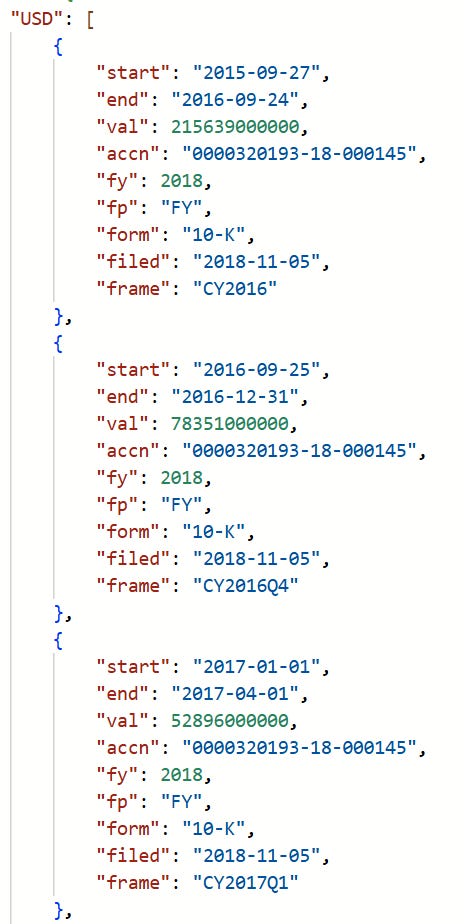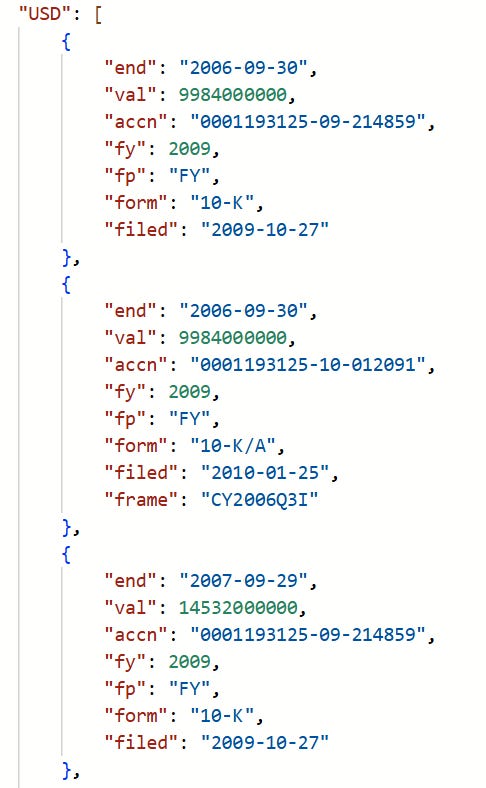No Bull
Leveraging Custom Connectors in Power Automate for Free SEC Financial Data (Statements + Filings)
The sort of thing you would think already exists: some sort of Power Platform connector for the Securities and Exchange Commission (SEC), the financial regulatory body here in the United States. Bummer.
Its counterpart in the UK, the Financial Conduct Authority, makes all their data available *and* there’s a connector available.
The catalog is wide ranging and immediately useful. A financial underwriter or compliance officer may find that a simple extract saves them from manually creating reports and all that clicking.
Well, then, I simply had to join the fun and created a custom connector for accessing SEC data. It’s good stuff, too; financial statement line items, form filings (10-K, etc.), submission metadata, and all kinds of metrics for a range of time periods, including quarterly and full year. It’s all there. And it’s free.
Now, it’s everybody’s party.
EDGAR, the data repository of the SEC, is accessible via public API. Broker-dealer licensing data may not be offered but if you have a CIK number, many financial statements - including line items - are available in addition to company information and filing history. To top if off: it’s completely free.
This new connector connects to and returns:
Submissions. Historical submissions and filings.
Facts. Detailed financial information, including various data points from financial statements, like revenue, expenses, assets, and liabilities.
Frames. Financial statement and filing data for specific periods, like quarters or years, for various financial metrics (e.g., revenue, expenses, assets).
Company Concept. Detailed financial information for a specific company and a specific financial metric, such as accounts payable or net income. It includes data points related to that metric, providing us a granular line item view into the company's financial performance over time for that specific metric.
Equity. Ownership interest in the company.
Liabilities. The company's debts or obligations.
Revenue. Income generated from business operations.
Net Income Loss. The company's total profit or loss after all expenses have been deducted from revenues.
Assets. Resources owned by the company and assigned a value.
Accounts Payable Current. Represents the company's short-term obligations or debts to suppliers.
Insurance underwriters, brokers, financial analysts are a few who would benefit from this sort of information. These data points can be fed into insurance raters, applications, form letters, you name it.
The output is structured and easy to implement in a flow. An example of the data returned for revenue:
Form filings for stockholders’ equity:
Some things to know before you try this on your own:
State of nature. EDGAR data is available via REST endpoint. For the most part, searches are on an individual entity basis. No waterfall lists available straightaway.
CIK number. This is a prerequisite. You’ll need a CIK in order to use the actions. The number must be ten characters long. The SEC even has their own CIK lookup utility but a quick Google search typically returns the CIK.
Authentication. The service is free, but you’ll get capped if you don’t include a value for the User-Agent header. “Use an email address” is the recommendation.
Organization. All reporting is defined and structured according to a standard taxonomy, which is a fancy way of saying “we’re keeping it tight” data-wise. Standardized tags are used for financial data, ensuring consistency and comparability across companies using this taxonomy.
Reporting standards. A small number of reporting standard codes can be passed to the connector as a parameter. To start, us-gaap is our code.
Currency. A traditional currency code works here, though I can’t guarantee that those metrics will be available in your desired currency. USD is the default.
Future work. This is just the start. I already have a few areas that I want to enhance to expand the reach of the utility. Stay tuned.
/**/
I’m preparing to share this with the community via the Developments git repo, but feel free to reach out with any questions. Hope you find this helpful.






